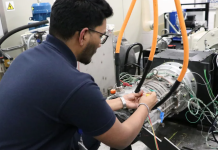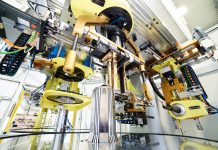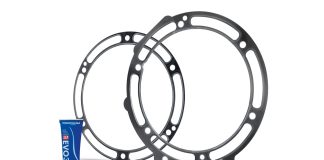Mouser Electronics, Inc. has expanded its portfolio with the availability of the Vishay RAIK060 absolute inductive rotary encoders. Intended for applications in automation, motor drives, and robotics, these encoders are designed with an off-axis, inductive configuration that is patented for its functionality.
The design of the Vishay RAIK060 enables repeatability and accuracy, with a resolution of up to 18 bits and an overall accuracy of 13 bits. The encoders offer repeatability of at least 17 bits, supporting consistent motion control across various applications.
Versatile for industrial applications
The RAIK060 rotary encoders are built for industrial environments, addressing challenges such as temperature fluctuations, vibrations, shocks, and pollution. Unlike encoders that use Hall effect sensors, the RAIK060 is designed to resist interference from magnetic and electric fields, making it suitable for use near electric motors without performance degradation
The encoders are offered in both single-turn and multi-turn options, allowing for diverse use cases. They work at rotational speeds of up to 10,000 rpm and have a latency of 5 µs or less. These characteristics make them compatible with high-speed processes requiring fast calculations in motor operations. Multiple output interfaces, such as SPI, SSI, and BiSS-C, are available, ensuring flexible integration into various systems.
The encoders also include a self-monitoring function that stores the last detected position before power is switched off. This feature is intended to enhance system reliability in operations where precise positioning is important.
Installation and applications
The encoders include features to simplify installation and operation. An auto-calibration function is built into the device, helping reduce setup time. Additionally, an LED status indicator assists in verifying the accuracy of mounting and ensuring proper operation.
These encoders are applicable across a range of industries, including motor drives, robotics, and motion control systems. They are designed to function in conditions associated with industrial environments while contributing to energy efficiency. Features such as low-latency processing aim to reduce energy use in systems, aligning with industry requirements for minimizing operational costs.









